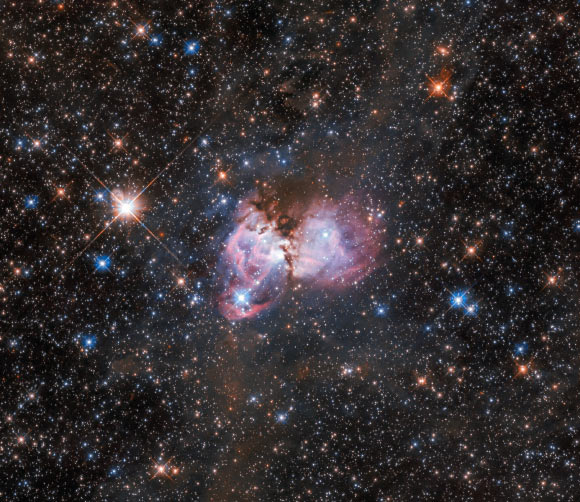Hubble Spots Nursery of Massive Stars in Large Magellanic Cloud | Astronomy – Sci-News.com
Astronomers using the NASA/ESA Hubble Space Telescope have captured a stunning image of a huge HII region called LHA 120-N 150. This bright pink cloud and associated young massive stars are located on the outskirts of the Tarantula Nebula, which is the largest known star-forming region in the local Universe.

This Hubble image shows a region of space called LHA 120-N150. Image credit: NASA / ESA / Hubble / I. Stephens.
The Tarantula Nebula is situated over 160,000 light-years away in the Large Magellanic Cloud, a neighboring irregular dwarf galaxy that orbits the Milky Way.
Also known as 30 Doradus or NGC 2070, this region measures nearly 1,000 light-years across and owes its name to the arrangement of bright patches that somewhat resemble the legs of a tarantula.
It has an exceptionally high concentration of massive stars, often referred to as super star clusters.
Astronomers have studied LHA 120-N 150 to learn more about the environment in which massive stars form.
Theoretical models of the formation of massive stars suggest that they should form within clusters of stars, but observations indicate that up to ten percent of them also formed in isolation.
The giant Tarantula Nebula with its numerous substructures is the perfect laboratory in which to resolve this puzzle as in it massive stars can be found both as members of clusters and in isolation.
With the help of Hubble, astronomers try to find out whether the isolated stars visible in the nebula truly formed alone or just moved away from their stellar siblings.
However, such a study is not an easy task; young stars, before they are fully formed — especially massive ones — look very similar to dense clumps of dust.
LHA 120-N 150 contains several dozen of these objects, which are a mix of unclassified sources — some probably young stellar objects and others probably dust clumps.
Only detailed analysis and observations will reveal their true nature and that will help to finally solve the unanswered question of the origin of massive stars.





